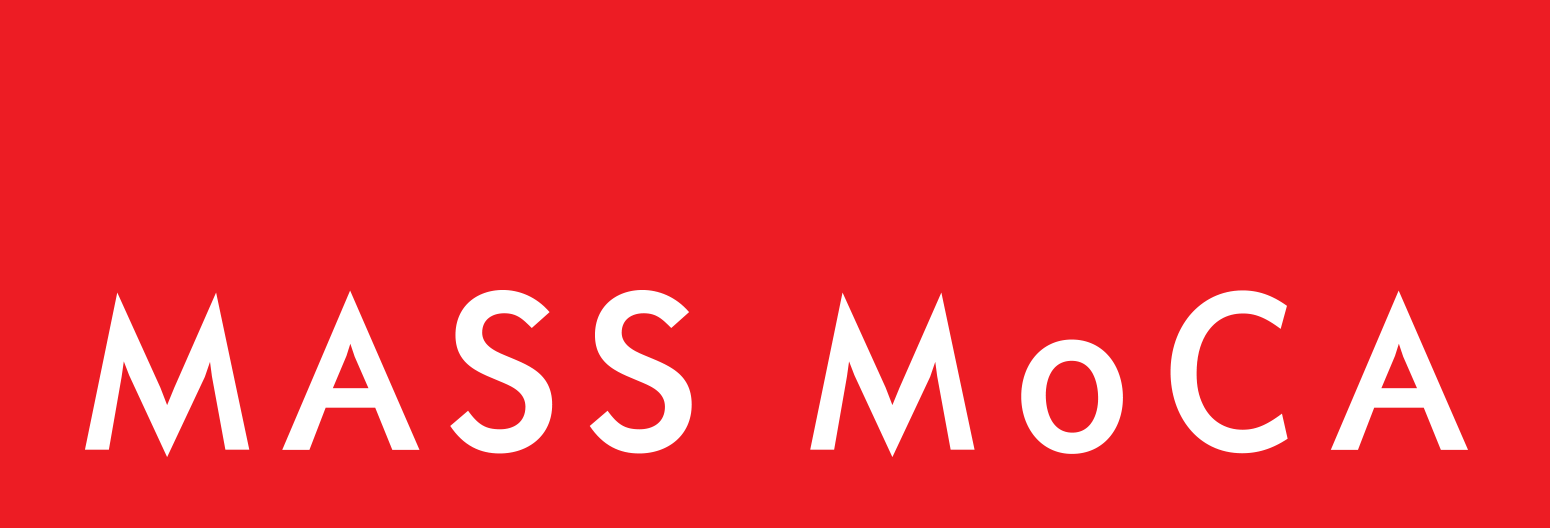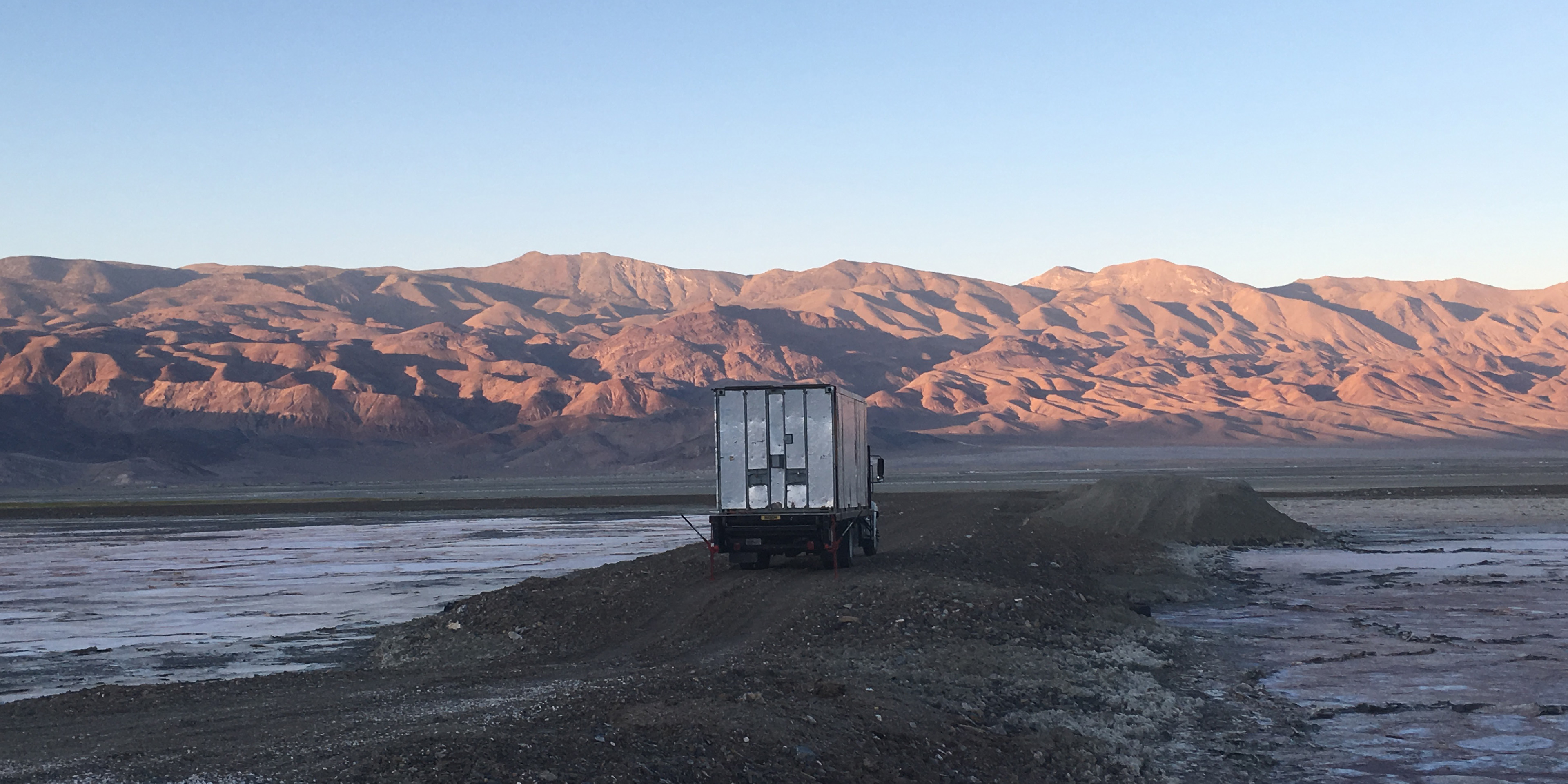Archive Exhibitions, Exhibition
- October 22 - November 27, 2016
- MASS MoCA
The Metabolic Studio is the Los Angeles headquarters of artist Lauren Bon’s collective practice. In 2010, Bon and artists Richard Nielsen and Tristan Duke formed the Optics Division, devoted to reinventing photography in a postindustrial era. Since photographing the Rochester Kodak factories shortly after the company declared bankruptcy, the team has embraced a return of the medium to its alchemical handmade foundations. The Optics Division seeks to recontextualize photography as a land-based practice, exploring the naturally occurring photochemical properties. From mining silver in the Sierra Nevada Mountains to making gelatin from local cattle, to formulating developing agents from native plants and mineral sediments of the Owens Valley — the Optics Division has sought a photography that is literally of the land.
A central tool for this work is the Liminal Camera, an oversized pinhole camera made from a 20-foot shipping container, which was on view in MASS MoCA’s Courtyard A. The team has traveled the country shooting with the Liminal for the last six years. Transported by a flatbed truck, the Liminal contains a full darkroom in which the group develops monumental negatives, some up to 12 feet long by 6 feet high. The word “liminal” refers to a threshold — a space between — a fitting name for a camera that invites people inside, as if to experience the place where image meets reality.
The selection of photographs at the museum focuses on the Owens Valley, which was drained dry by the water needs of Los Angeles, 200 miles to its south. Constructed in 1913, the Los Angeles Aqueduct — which still ferries water from the Valley — provides LA with 35% of its water. Bon and The Metabolic Studio have been highlighting connections between the dry lakebed and the city since 2006 when she drove a tanker truck of water from LA and deposited it back in the lakebed. In 2013, on the 100th anniversary of the aqueduct’s construction, Bon led 100 mules on a 28-day journey, tracing its entire length.
The search for photoreactive elements in the Owens Valley led the Optics Division to a deep blood-red pool of briny water in the dried lakebed. Teeming with extremophile bacteria, the pool proved to be a concentrated source of sodium thiosulfate — a chemical “fixer” essential to the photographic process. One night, under a blanket of stars, the team took a Liminal negative and buried it in one of these pools. The next morning the image was not only fixed — but also transformed.
In the end, this alchemical landscape collaboration results in images that bear the trace of their own making; photographs of the landscape imbued with the very chemical composition of the Valley. Mineral residue obscures the image, while also revealing the starkness of this solitary landscape, including dead trees — casualties of diminishing water tables and droughts. The images are at once beautiful and heartbreaking; some contain aurora borealis-like swirls across the surface, like an oil slick remnant of a contaminated environment. Or perhaps this iridescence is a rainbow of hope that one day this landscape might be healed.
Prints from the Owens Valley, as well as the Liminal Camera itself, were on view at MASS MoCA from October 22 to November 27, in coordination with Explode Every Day: An Inquiry into the Phenomena of Wonder. In North Adams, the Optics Division photographed Building 6, the site of MASS MoCA’s 2017 gallery expansion. On Saturday, October 22, the artists were in the camera holding demonstrations for the public from 12 to 4pm, with a reception from 4 to 5:30pm on the third floor of the museum.
photo courtesy of the artists


